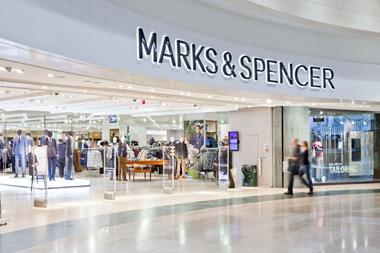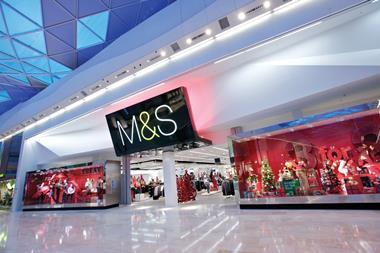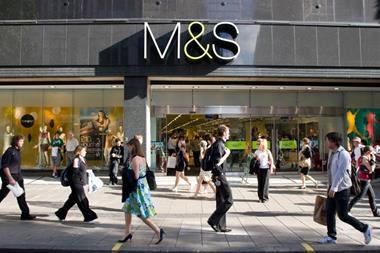The City is used to M&S delivering good food sales growth and bad clothing trading, so today’s first-quarter update threw a spanner in the works.
Ahead of today’s update from Marks & Spencer (for the 13 weeks to July 1), the jungle drums were beating that clothing and home like-for-like sales were likely to be ‘only’ about 1% down.
So, despite the desperately soft comps, the bulls will be pleased to see that clothing and home sales were indeed only 1.2% down – or down 1.8% on an Easter-adjusted basis.
But, not surprisingly, M&S trumpeted the fact that ‘full-price’ clothing and home sales were actually 7% up overall in the first quarter on the back of reduced promotions.
Favourable implications
This implies that consumers have liked the new spring/summer ranges and the way in which they have been merchandised and marketed.
It is total clothing and home sales that count at the end of the day, and they were still down in the quarter, despite helpful weather in June and the early fall of Eid this year (as highlighted by the overnight BRC-KPMG Retail Sales survey for June).
So the bears would say that it is wrong to get carried away.
“M&S has been criticised for discounting too much in the past – particularly online”
Yet M&S has been criticised for discounting too much in the past – particularly online – so it is only fair to recognise the improvement in its pricing power and the favourable implications for achieved gross margins.
And it should be noted that M&S’s great rival Next has long focused on measuring its full price clothing and home sales, with short/sharp mid- and end-of-season Sales designed purely to clear terminal stocks.
Mid-market competition
In the long term, however, the new management under chief executive Steve Rowe still look to be up against it, given the sheer intensity of competition in the mid-market in clothing, and the business still looks over-spaced on the high street.
“The future of M&S has seemed to lie in a reallocation of the business away from clothing”
The future of M&S has seemed to lie in a reallocation of the business away from clothing and more towards its food operation, which enjoys a great niche in fresh food and ready meals.
Investors have bought into the plan to keep on opening more food store space in convenient locations.
The bears have therefore seized on the disappointing 0.8% fall in Easter-adjusted food like-for-like sales in the first quarter as evidence of cannibalisation caused by all the Simply Food store openings (total food sales rose by 3.8% on the same basis), given the helpful summer weather for M&S’ excellent picnic and barbecue fare and the higher food price inflation background.
Under questioning this morning, Steve Rowe noted that M&S is not the place where consumers go to stock up on cheap lager, etc during a heatwave but, even so, the weather should have been a net positive for the food business in quarter one.
Cutbacks in range and promotions
M&S also pointed to two other problems: excessive cutbacks in some food product ranges to reduce waste and a lack of decent food promotions at a time when consumers have been looking for greater value.
“We are focused on tightening execution through improving ranging in-store and on delivering stronger promotions in a competitive market,” Rowe said in a statement.
It would, of course, be ironic if the M&S food business has to get more promotional again, just as the pace of promotions dries up in the M&S clothing and home business.
“It would also be ironic if M&S food starts to go wrong just as M&S clothing starts to come right”
It would also be ironic if M&S food starts to go wrong just as M&S clothing starts to come right, after years of disappointment.
M&S’ full-year profits guidance is unchanged at this stage, so the two contrasting divisional performances in the first quarter have played a score draw.
But blips can become trends and the City has wisely taken the precaution of marking the shares down today, by more than 4%, just in case bad M&S food trading becomes a new worry.


























No comments yet